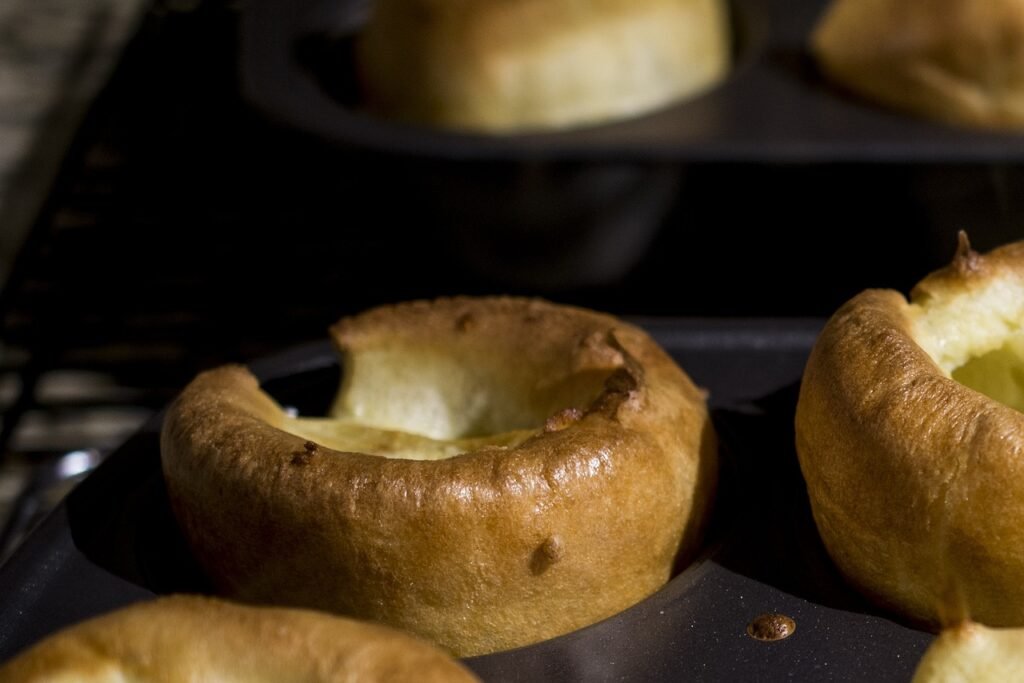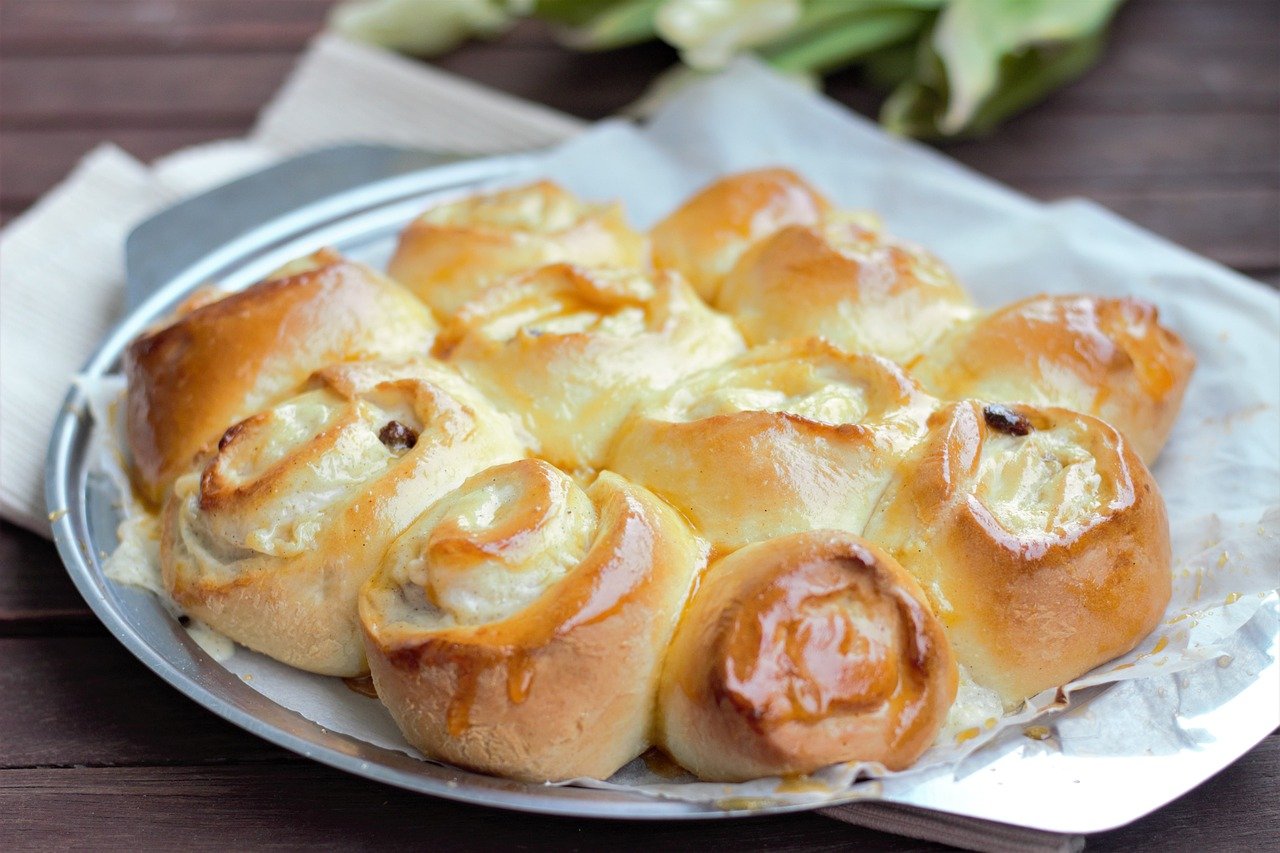Yorkshire pudding is a classic British side dish, renowned for its light, airy texture and rich flavor. Traditionally served with roast beef and gravy, this beloved treat has become a staple in Sunday roasts across the UK. With its origins tracing back to the 18th century, Yorkshire pudding has evolved from being a simple accompaniment to meat to a versatile dish enjoyed by people around the world. If you’re eager to learn how to make the best Yorkshire pudding recipe, you’ve come to the right place. This guide will walk you through the process of creating the perfect Yorkshire pudding.
The History of Yorkshire Pudding
Before diving into the recipe itself, understanding the history of Yorkshire pudding enriches the cooking experience. Yorkshire pudding was first mentioned in a cookbook in 1737, in a publication called The Whole Duty of a Woman, where it was referred to as “dripping pudding.” The dish was created as a way to use the fat that dripped from roasting meat, allowing nothing to go to waste. Originally served before the meat course to fill up diners on something less expensive, Yorkshire pudding has since become a delicacy in its own right.
The simplicity of the ingredients—flour, eggs, and milk—belies the expertise needed to master this dish. When done right, Yorkshire pudding emerges golden and crispy on the outside, soft and tender on the inside. This recipe will help you achieve just that, every time.
Ingredients for the Perfect Yorkshire Pudding
Before you start cooking, gather the following ingredients. The beauty of this best Yorkshire pudding recipe is that it requires minimal ingredients, most of which you probably already have in your kitchen.
Ingredients:
- 4 large eggs: Eggs provide the structure for the pudding, and using large eggs helps ensure the right balance of liquid and binding agents.
- 200g plain flour (1 ½ cups): All-purpose flour is ideal for this recipe. Make sure to sift the flour to avoid lumps and to ensure a light batter.
- 200ml milk (¾ cup): Full-fat milk gives the batter richness and a creamy texture, but semi-skimmed milk works as well.
- Pinch of salt: Salt is crucial to enhancing the flavor of the pudding.
- Vegetable oil or beef dripping: Traditional recipes call for beef dripping, which imparts a deliciously meaty flavor, but vegetable oil works as a great alternative for a neutral taste.
Equipment:
- A 12-hole muffin tin or a large roasting pan
- A mixing bowl
- A whisk
- Measuring jug
- Oven gloves

Step-by-Step Instructions: The Best Yorkshire Pudding Recipe
1. Prepare the Batter
The key to a successful Yorkshire pudding lies in the batter. For the best results, it’s recommended to prepare the batter at least an hour before cooking or even the night before. This allows the flour to fully absorb the liquids, leading to better rise and texture.
- Crack the eggs into a large mixing bowl and whisk them thoroughly until they become slightly frothy.
- Gradually sift the flour into the eggs while continuing to whisk. This prevents lumps from forming and ensures a smooth batter.
- Slowly add the milk while whisking to incorporate air into the mixture. Keep whisking until you have a smooth, thin batter that has no visible lumps.
- Add a pinch of salt and give it one last whisk.
- Cover the bowl with cling film and leave it to rest at room temperature for at least 30 minutes (or refrigerate overnight if making ahead).
2. Preheat Your Oven and Tin
Getting the oil or fat hot enough is essential for achieving the crispy edges that are characteristic of Yorkshire pudding.
- Preheat your oven to 220°C (425°F/gas mark 7). It’s important to ensure the oven is properly heated before you begin cooking.
- Place a small amount (around one teaspoon) of vegetable oil or beef dripping in each hole of a muffin tin, or enough to cover the bottom if you’re using a roasting pan.
- Place the tin in the oven to heat the oil until it’s smoking hot, which should take about 10-15 minutes. This step is critical; the hot oil will immediately cook the batter upon contact, helping it puff up and become crispy.
3. Pour the Batter
Once the oil is smoking hot, carefully take the tin out of the oven using oven gloves (the tin will be extremely hot). It’s now time to add the batter.
- Pour the prepared batter into each hole of the muffin tin, filling them about halfway.
- Be quick when transferring the tin back into the oven to prevent the oil from cooling down.
4. Bake to Perfection
Now comes the final step, baking the puddings to golden perfection. It’s crucial that you do not open the oven door during this stage, as the cold air entering the oven could cause the puddings to deflate.
- Bake for 20-25 minutes or until the puddings are well-risen and a deep golden brown.
- You’ll know they’re done when they’re crisp on the outside and slightly soft on the inside.
5. Serve and Enjoy
Once baked, immediately remove the Yorkshire puddings from the tin and serve hot. These puddings are perfect with roast beef, gravy, and roasted vegetables, but they also pair well with sausages (for a classic Toad in the Hole), or even as a standalone snack with a dollop of jam for a sweet twist.
Yorkshire Pudding Recipe Tips and Tricks
Achieving the best Yorkshire pudding recipe can take practice, but these tips will help you get the best results every time:
1. Room Temperature Ingredients
Using room temperature eggs and milk helps create a lighter batter that rises better. Cold ingredients can hinder the pudding’s ability to puff up as much as possible.
2. Rest the Batter
Letting the batter rest allows the flour to fully absorb the liquid, resulting in a better texture. For the best results, make your batter ahead of time and allow it to rest for at least 30 minutes, or even overnight.
3. Preheat the Tin and Oil
The hotter the oil, the better the rise. Make sure your oil is smoking hot before pouring in the batter. This heat creates the steam that helps the Yorkshire puddings puff up.
4. Use Beef Dripping for Traditional Flavor
While vegetable oil works fine, using beef dripping (rendered fat from a roast) will give your Yorkshire puddings a deep, savory flavor that is traditional to the dish.
5. Don’t Open the Oven Door
One of the most important rules is to keep the oven door shut while the puddings are cooking. Opening the door too soon will cause the puddings to collapse.
Variations on the Yorkshire Pudding Recipe
While this traditional recipe is a great starting point, you can also get creative with your Yorkshire puddings:
- Herb-Infused Puddings: Add finely chopped rosemary, thyme, or sage to the batter for an aromatic twist.
- Cheese-Stuffed Puddings: For a savory version, add a small cube of cheese to the batter before baking. The cheese will melt inside, creating a gooey center.
- Sweet Yorkshire Puddings: If you’re feeling adventurous, drizzle honey or golden syrup over freshly baked Yorkshire puddings for a sweet dessert option.
Pairing Yorkshire Pudding with Your Meal
Yorkshire pudding pairs beautifully with various dishes, but it is most famously served alongside a traditional British roast dinner. Here’s a breakdown of the ideal accompaniments:
- Roast Beef: The classic choice. Serve the Yorkshire pudding with roast beef, roast potatoes, and lashings of rich gravy.
- Sausages (Toad in the Hole): For a British comfort food favorite, cook sausages in a large Yorkshire pudding and serve with onion gravy.
- Roast Chicken: Yorkshire puddings work equally well with other meats, including chicken, lamb, and pork.
- Vegetarian Dinners: Don’t worry, vegetarians can enjoy Yorkshire puddings too! Serve with a nut roast, roasted vegetables, and vegetarian gravy.
Conclusion
Making Yorkshire pudding may seem intimidating, but by following this detailed guide, you’ll be on your way to achieving crispy, fluffy puddings that impress every time. Whether you stick to the traditional best Yorkshire pudding recipe or try your hand at a new variation, Yorkshire pudding is a versatile dish that can elevate any meal. With a few simple ingredients and the right technique, you’ll be able to make the best Yorkshire pudding recipe, bringing a piece of British culinary tradition to your kitchen. Enjoy your delicious creations and share them with family and friends!
FAQ,s
1. What is the best Yorkshire pudding recipe?
The best Yorkshire pudding recipe involves a simple mix of flour, eggs, milk, and a pinch of salt. The key is to ensure that the batter is mixed well and allowed to rest before cooking it in smoking hot oil. This method ensures that the puddings rise beautifully and have a crispy exterior.
2. How do I make the batter for the best Yorkshire pudding?
To make the batter for the best Yorkshire pudding recipe, whisk together 4 large eggs, 200g of plain flour, and 200ml of milk. Add a pinch of salt and whisk until smooth. Let the batter rest for at least 30 minutes or up to overnight for the best results.
3. What temperature should I cook Yorkshire pudding?
For the best Yorkshire pudding recipe, preheat your oven to 220°C (425°F). This high temperature is essential for achieving the perfect puff and crispiness.
4. How can I ensure my Yorkshire puddings rise properly?
To ensure your Yorkshire puddings rise, it’s crucial to start with hot oil in the muffin tin. The batter should also be at room temperature before pouring it into the hot oil. Avoid opening the oven door while they are baking to prevent them from collapsing.
5. Can I make the Yorkshire pudding batter in advance?
Yes, making the batter in advance is recommended for the best Yorkshire pudding recipe. You can prepare it the night before and store it in the refrigerator. Just be sure to bring it back to room temperature before baking.
6. What should I serve with Yorkshire pudding?
Yorkshire pudding is traditionally served with roast beef and gravy, but it can also be paired with sausages (for Toad in the Hole), roast chicken, or even enjoyed as a sweet treat with jam. The versatility of this dish makes it a favorite in many households.
7. Can I freeze Yorkshire puddings?
Yes, you can freeze Yorkshire puddings. To do this, allow them to cool completely after baking, then place them in an airtight container or freezer bag. When you’re ready to eat, simply reheat them in the oven until hot and crispy.






